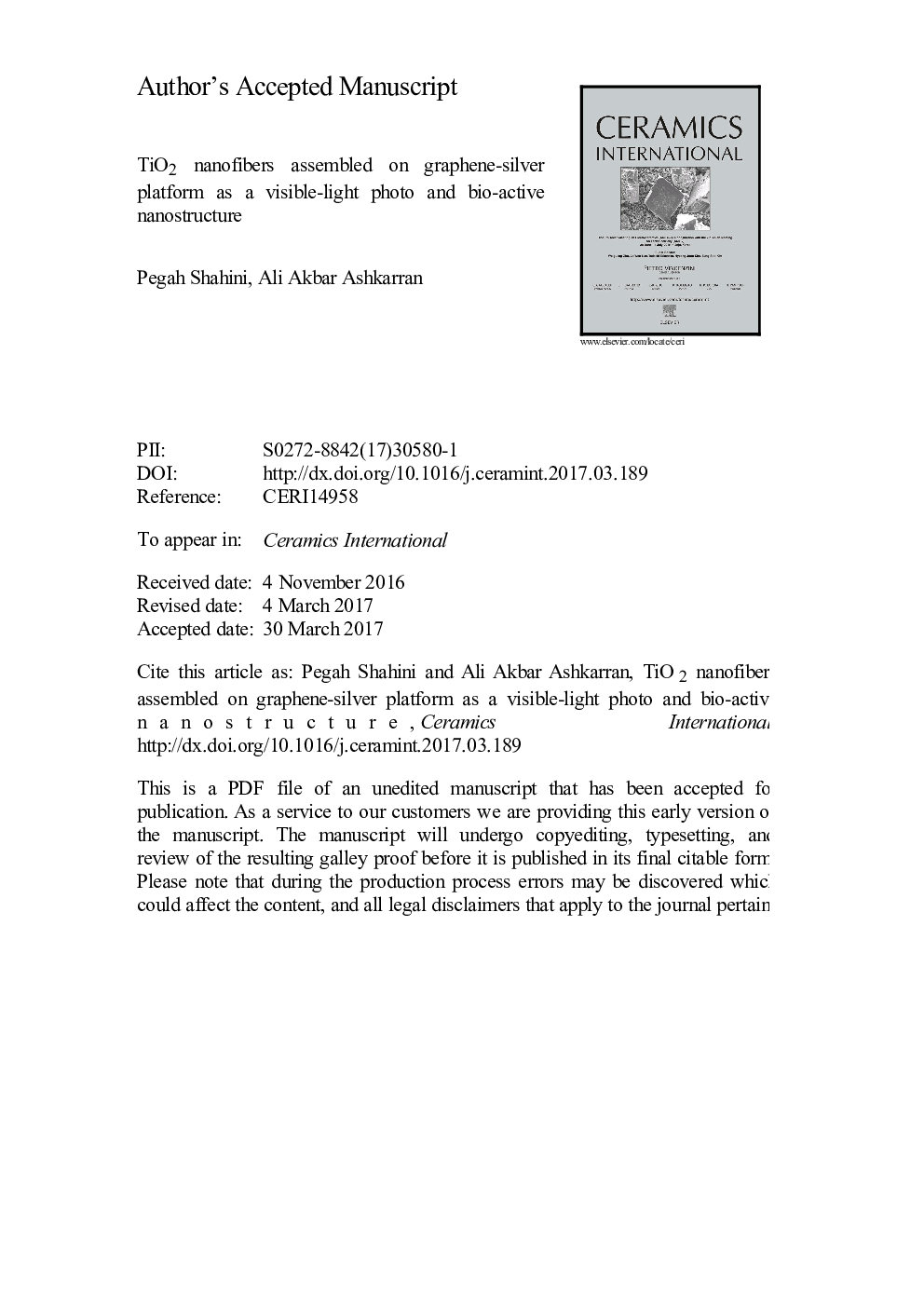| Article ID | Journal | Published Year | Pages | File Type |
|---|---|---|---|---|
| 5438323 | Ceramics International | 2017 | 36 Pages |
Abstract
The heterogeneous titanium oxide-reduced graphene oxide-silver (TiO2/RGO/Ag) nanocomposites were successfully prepared by incorporation of two dimensional (2D) RGO nanosheets and spherical silver nanoparticles (NPs) into the 1D TiO2 nanofibers. The novel TiO2/RGO/Ag nanocomposites were synthesized by loading TiO2 nanofibers, prepared via electrospinning technique, on the RGO/Ag platform. The resulting nanocomposites have been characterized using various techniques containing transmission electron microscopy (TEM), energy-dispersive X-ray spectroscopy (EDS), X-ray diffraction (XRD), Fourier transform infrared spectroscopy (FT-IR) and ultra-violet-visible (UV-vis) spectroscopy. Microscopic studies clearly verified the existence of TiO2 nanofibers with Ag NPs on the surface of RGO sheet and formation of TiO2/RGO/Ag nanocomposites. Moreover, the results of UV-vis spectroscopy demonstrated that TiO2/RGO/Ag nanocomposites extended the light absorption spectrum toward the visible region and significantly enhanced the visible-light photocatalytic performance of the prepared samples on degradation of rhodamine B (Rh. B) as a model dye. It was found that, incorporation of 50 µl RGO/Ag into the TiO2 nanofibers lead to a maximum photocatalytic performance. Also, the improvement of the inactivation of Escherichia coli (E. coli) bacteria under visible-light irradiation was revealed by introduction of RGO/Ag into the TiO2 matrix. The significant enhancement in the photo and bio-activity of TiO2/RGO/Ag nanocomposites under visible-light irradiation can be ascribed to the RGO/Ag content by acting as electron traps in TiO2 band gap.
Related Topics
Physical Sciences and Engineering
Materials Science
Ceramics and Composites
Authors
Pegah Shahini, Ali Akbar Ashkarran,
